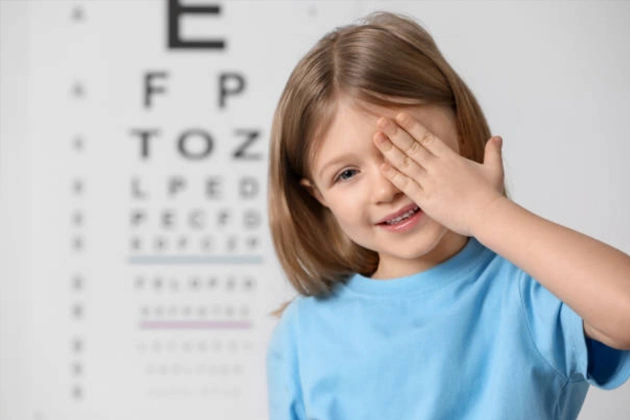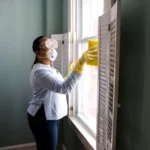Children don’t always know when something’s wrong with their vision—and sometimes, neither do we. While some eye problems are easy to spot, others quietly affect how a child learns, plays, and grows. However, catching these issues early can make all the difference.
Visiting a pediatric ophthalmologist for regular screenings can help protect your child’s visual system as they grow. In this article, we will examine some symptoms that, if observed in your child, indicate the need to consult a professional eye care specialist.
Blinking or Rubbing
Most of the time, irritation causes children to blink and rub their eyes frequently. This situation can be managed with over the counter or prescription drugs. At certain times, irritation occurs when a foreign body becomes trapped under the eyelid. Allergies, stress and anxiety can make blocking become a habitual tic.
This is something you shouldn’t worry about much. However, once your child starts blinking and rubbing repeatedly without any of the above causes, it’s a sign of a refractive error, such as nearsightedness. The best course of action is to schedule an appointment with an ophthalmologist, who can use professional vision testers, such as the Depisteo vision screeners, to assess the child’s vision and diagnose any issues. The ophthalmologist will then prescribe the appropriate corrective lenses if necessary. Keep in mind that it’s very rare for these symptoms to be signs of neurological problems.
Spots on the White of the Eye
Spots on the eye can happen due to many reasons but always pay attention to the color and size of the spot. A bright red indicates subconjunctival hemorrhage, meaning there is a blood vessel that looks scary, but it’s usually harmless and will resolve on its own.
You may also notice a gray spot, which is a sign of a benign condition that should be checked by a professional, as it can sometimes indicate an underlying iron deficiency or anemia.
Another coloration is a brown spot, known as a nevus or eye freckle, which occurs frequently in children with dark hair or eyes because they naturally produce more melanin. Nevus alone is not a sign of a problem, but it’s advised to be monitored over time by experts for any changes in color or size.
Dilated Eyes/Large Pupils
Children may sometimes experience dilated pupils, meaning the pupils appear larger than those of adults. This effect is more pronounced in individuals with light-colored eyes.
Normally, when exposed to bright or artificial light, the pupil becomes smaller. Some medications can also affect the size of the pupil. If this symptom persists, where one pupil is larger than the other, consider consulting a pediatric ophthalmologist for evaluation.
Seeing Spots in Vision
Spots or floaters in vision resemble grey, black specks, strings or cobwebs. In healthy eyes, they occur due to the vitreous gel in the eye that casts a shadow on the retina. Thankfully, it’s rare for children to experience floaters; they are more common in older adults, and in some cases, floaters are harmless.
It only becomes a problem when there are many new ones, and they are maybe accompanied by flashing lights or vision loss, which indicates a retinal tear or inflammation inside the eye. Conducting eye screenings early can help detect these problems and allow for prompt intervention.
Click here to learn three key things you should know about your child’s vision.
Discomfort or Itchiness
In some seasons, children may experience temporary allergies, such as itchiness and discomfort. These allergies can also cause a tearing and burning sensation in the eyelids. This can escalate and lead to a nasal allergy.
All these are caused by dander, dust, pollen, smoke and perfumes. If you observe that the discomfort is accompanied by redness and sticky discharge, it may be a sign of viral or bacterial conjunctivitis, also known as pink eye.
Early eye screening can help detect these problems, and once identified, you will be referred to an ophthalmologist who will provide proper treatment and relief.
Sleeping With Eyes Open
While sleeping, your child’s eyes may open slightly, and sometimes they may even move around. This is considered safe and does not require concern.
But once you observe that their eyes are frequently open and they wake up with dry, red and irritated eyes. It’s best to undergo an eye screening or visit a professional eye care specialist, who will recommend an ointment or drops to keep the eyes moist and prevent damage to the cornea.
Visit https://www.nei.nih.gov/learn-about-eye-health/nei-for-kids/healthy-vision-tips to learn more about how to care for your child’s eyes.
Conclusion
Taking your child for an eye screening can allow you to detect problems early and intervene promptly. We’ve mentioned some of the signs that indicate potential visual issues in your child. Once you discover any of the symptoms, visit a professional to diagnose and identify the problem, then put you through the proper treatment.











